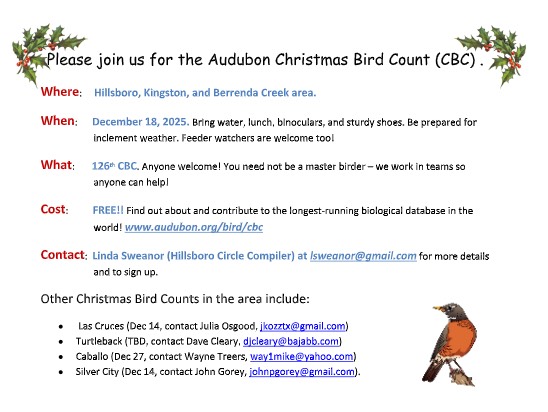An annoying problem has developed with the publication schedule of the Black Range Naturalist (BRN). I sometimes receive material which is excellent but the publication schedule of the BRN does not support timely publication of the material; drafts of the next two BRN’s may be close to final for instance. I may be working on a future issue of the BRN which is nine months out. Publishing something nine months after I receive it is not timely. So I (Bob Barnes) have decided to revisit the idea of publishing a blog on the Black Range (BR) website, to address this particular problem.
This blog (“Natural History Blog”) will be focused on getting material out there for people to see and react to, rather than on providing a researched piece. It apparently will not focus on catchy blog names.
Please provide your comments directly to me at rabarnes@blackrange.org.
@@@
Jewelflower Study
Arizona Jewel Flower, Streptanthus carinatus arizonicus, blooms early in the year. The photograph below was taken on Apache Hill (recently featured in the Lake Valley Mining District video) on April 14, 2020. I have also photo-graphed the species in late March at Pony Hills, southwest of Cooke’s Peak.
Why is this worth mentioning? In a new study, there is always a new study, Megan Bontrager et al. found that jewelflower species in California "appear to have diverged in their climate niches based on highly differentiated annual conditions are actually tracking very similar seasonal climate conditions”. (M. Bontrager, S.J. Worthy, N.I. Cacho, L. Leventhal, J.N. Maloof, J.R. Gremer, J. Schmitt, & S.Y. Strauss, "Herbarium specimens reveal a constrained seasonal climate niche despite diverged annual climates across a wildflower clade", Proceedings of the National Academy of Sciences U.S.A. 122 (28) e2503670122, July 1, 2025, https://doi.org/10.1073/
pnas.2503670122.) This finding may turn out to be a significant point in our understanding of how plant species evolve to live in new habitats.

The jewelflower found in our area, Streptanthus carinatus arizonicus, was not one of the 14 species included in the study but the researchers found that the characteristics cited above were common across the members of the genera they studied.
Northern Lights
The aurora borealis is not something you should expect to see if you live in zip code 88042; Lake Valley, Kingston, Hillsboro, and adjacent areas. But that is what happened last night. At around 8 p.m. John West, Therese Van Buskirk, and Debora Nicoll took the following photos of the northern lights. John’s photograph is the first in the following series, followed by Therese’s photographs, and lastly a photograph of the aurora behind Brenda Mountain by Debora Nicoll.

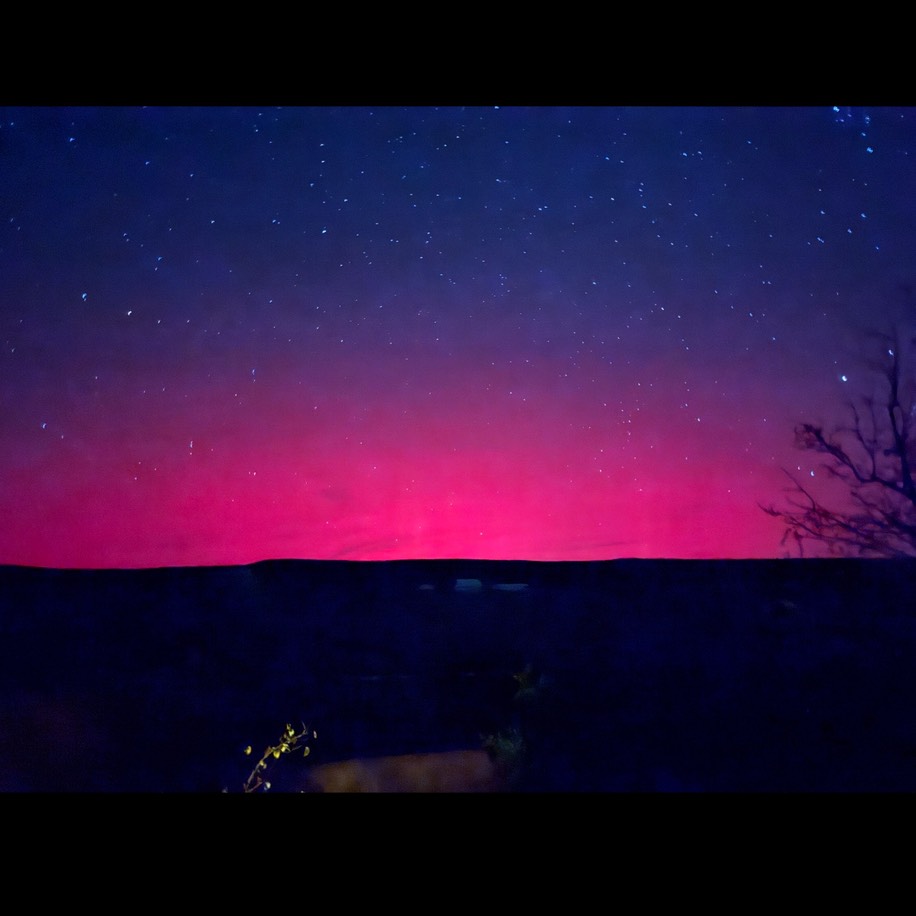

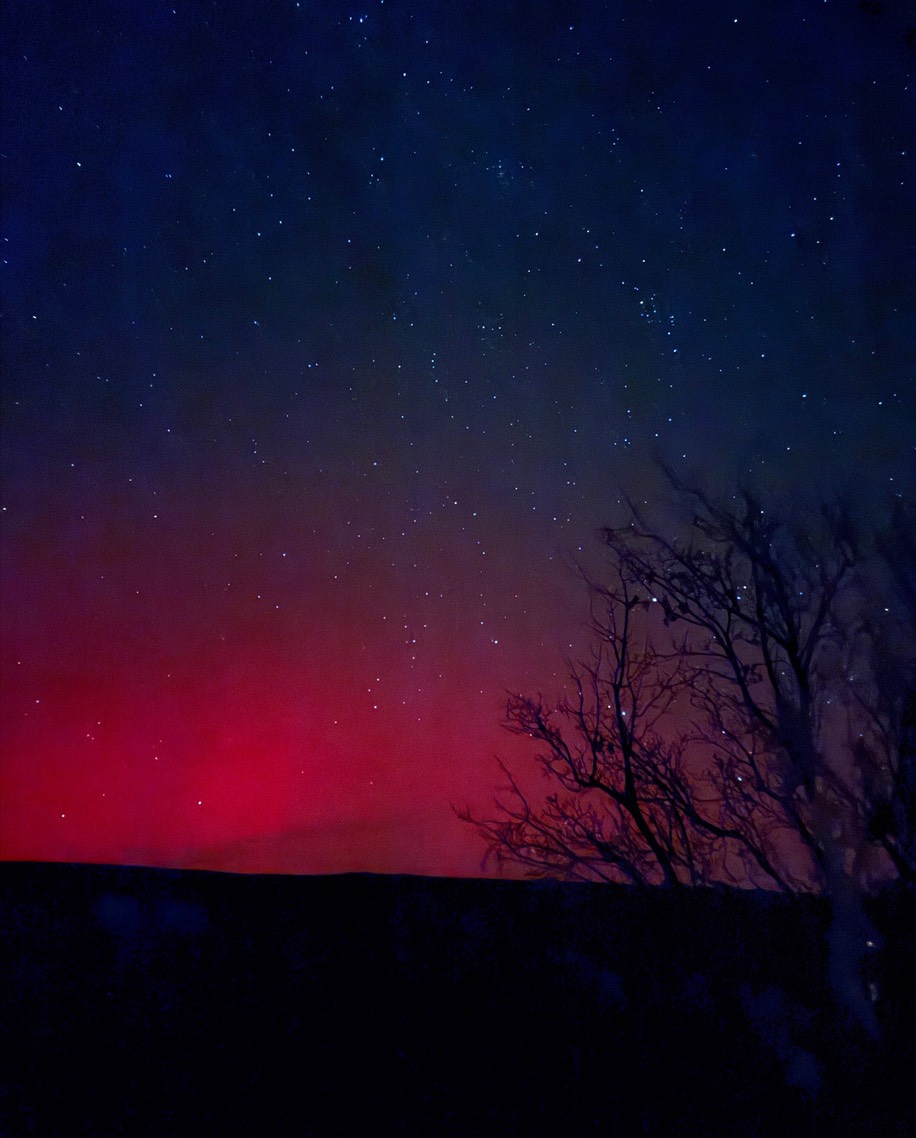

There is the possibility that the aurora borealis will be seen from this area tonight (11/12) and perhaps even on Thursday night (11/13).
Special thanks to Kathleen Blair for assisting in this post.
Amended at 9:03 to add the photograph by Debora Nicoll.
Mines of the Black Range - 15 Videos
With the addition of two new videos (The Fluorite Mining District and The Lake Valley Mining District) the Mines of the Black Range video portfolio now includes 15 videos.
The 2025 State of the Climate
What is it called when a species commits suicide? What is it called when a species kills off countless other species? Humanity is a failed experiment! The 2025 State of the Climate report has been issued, needless to say this is not a report from the United States Government. The following is one small piece of the report.

Grasshoppers
Whether they be green, brown, or black. Whether they be tiny or huge (relatively). Whether they fly or just hop. Whether they are very much alive or smashed on your windshield. It is a time of grasshoppers and they are everywhere.

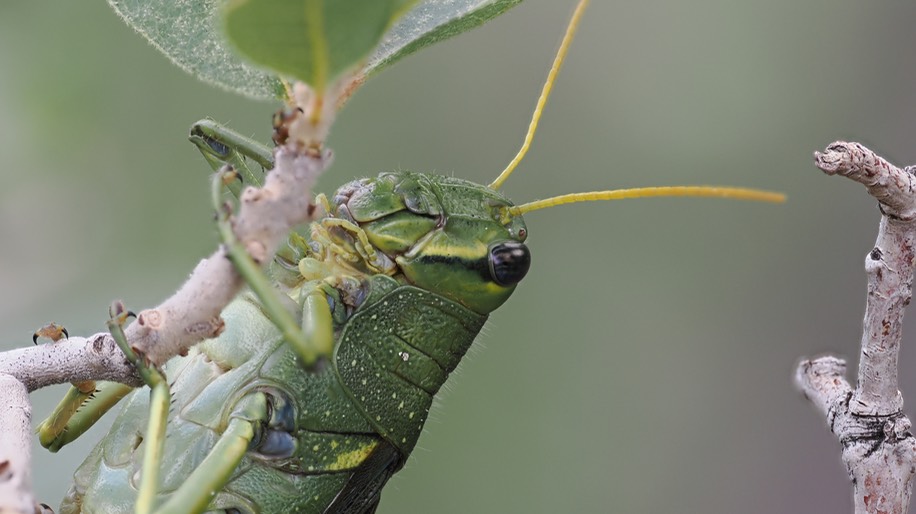
Strangely, the fact that there are so many does not make it easier to identify any one individual to species. Turns out there are a number of grasshopper species in this area, that each instar stage can look different, very different, from its predecessor or what comes next, and there are significant regional and individual differences to contend with. Great fun. Well….
On a recent outing to Andrews (north of Animas Peak, by Copper Flat) hiking companions noted the jewels flying through the sky. The wings of grasshoppers can glimmer in a variety of colors as they plow through the air, greens, turquoise-blue, yellows, and reds seem to predominate but some are more subtle.
I suspect that the individual shown above is Schistocerca albolineata, White-lined Bird Grasshopper. It looks a lot like S. obscura, the Obscure Bird Grasshopper, but note the red hind tibiae.
In describing this species, BugGuide notes that it is "Similar to S. lineata and venusta, but more contrastingly marked, with bold dark bars on the hind femora. This species is dark olive green or brown to black, with contrasting pale yellowish markings, and bold contrasting markings on the hind femora, with the hind tibiae red to black.
Occasionally individuals are green with fewer pale contrasting markings, but still have bold contrasting black markings on the hind femur. These closely resemble eastern S. obscura, but usually have red hind tibiae. Their appearance raises interesting questions about possible hybridization, and they are often misidentified.”
Although the taxonomic boxes have been, more-or-less, sorted at this point which individuals belong in which boxes is still unclear at times.
Other photographs of the individual shown above may be seen at this page.
Lake Valley Video Projects
Sometime during the next three months we will publish 2 (maybe 3) short videos from Lake Valley in the southeastern quadrant of the Black Range. The first will focus on some of the landforms and botantical associations in the area, like Monument Peak shown below.
The other will focus on the Lake Valley Mining District, part of which is shown below. This video will be a continuation of our videos about the mining which has occured in the Black Range.

How I View Nature Through My Art - by Melody Sears
I believe most people are mainly visual beings, and I would guess virtually everyone with the capacity for sight has felt stirrings deep within themselves when they see something "beautiful.” The "beautiful" varies between us humans, but we each have the capacity to appreciate what we find beautiful.
I am an artist who primarily paints landscapes, relying on views that make me sigh with pleasure. What grabs my eye varies from mountains to creeks, grasses to trees, cloudscapes to critters. Nevertheless, whatever subject I find beautiful always has elements of contrast in colors, shadows and shapes. Specifically, these are contrasts of lights vs. darks ("values" in artist-talk); contrasts of color (such as yellows vs. violets); contrasts of size and shape (think of a vast ocean view with seagulls flying overhead); as well as movement through the scene that allows the viewer's eye to travel and wander up and down, side to side, forward and back.
Example One: Hoodoo Hillside
This image, west of Hillsboro and seen in full sunlight, was a marvel. The contrasts are dramatic: orange rocks against blue sky and green grass; dark foliage in shadow vs. light green bushes and grass in sunlight; small rock shapes in the distance vs. a large bank of rock in the foreground; and the zig-zag movement of rocks, grass, and foliage that encouraged my eyes to walk up and down the hillside, noticing more and more as I wandered. Everything about it was exciting and dramatic. It grabbed me and I immediately started to paint it mentally, imagining the contrasts I needed to push to ensure it would look as compelling in pastel as it felt in real life.
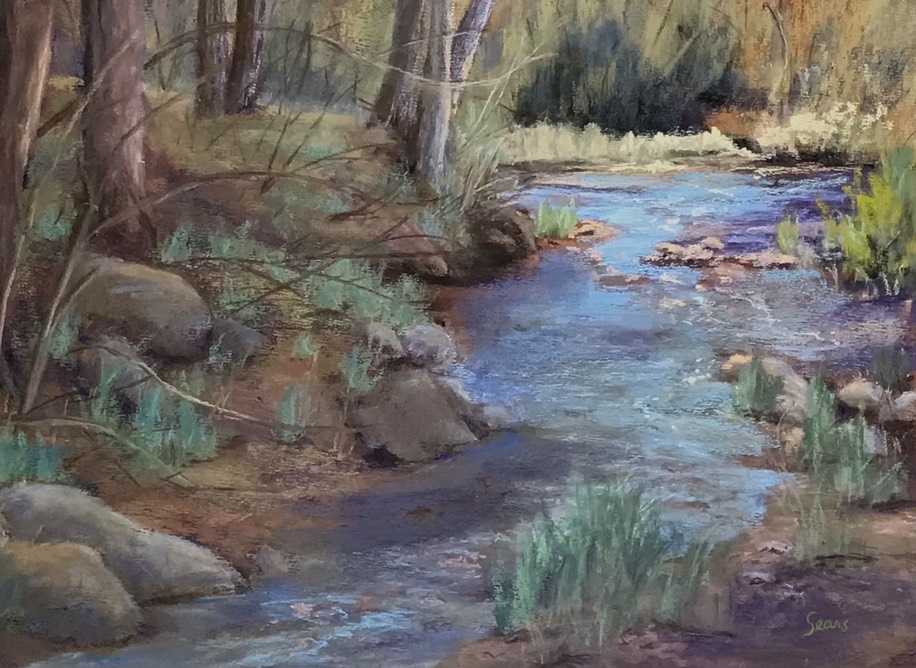
Example Two: Reverence
Although quieter and less dramatic than Hoodoo Hillside, this painting of Percha Creek relies on the same contrast of elements. Value is obvious by the mostly shadowed areas (darks) contrasted to the distant sunlit grasses and bright water (lights). Color contrasts include reddish-brown dirt under blue-green grasses in the foreground, and blues in the water against distant yellow grasses and dull orange in the trees. Size and shape differences are apparent with various rocks, trees and grasses. Movement starts either with the large rocks lower left and moves up the creek to the upper right, or vice versa. There is also movement from left to middle in the graceful, curving, young tree branches.
This quiet, peaceful scene required lots of shadow, with blues and blue-green pastels predominating. I needed to work slowly and thoughtfully to bring out the serenity I felt when I first saw it. No bravado needed here, just gentleness.
It is often difficult to pinpoint exactly why something strikes us as being beautiful. After decades of painting, the why for me has become deeply ingrained in the presence of contrasts. When you are out walking or driving and you find a beautiful sight, I suggest you try to notice the contrasts that are quietly forcing you to find it beautiful: the dark to light values, the subtle or dramatic changes in colors, the variations in size and shapes, and the movement your eyes take when viewing it. For me, nature is a study in contrasts, it knows all the rules, and the beauty we find about us is most likely relying on those rules.
P.S. I mentioned I paint with soft pastels, "soft" because they disintegrate easily. They are shaped like blackboard chalks, but consist not of chalk but rather of pure finely ground colored pigments held together with a minimum amount of binder, allowing them to be shaped into sticks.
Editor’s Note: Melody now paints in Tucson but during her time in Hillsboro we conducted an “interview" with her, featuring her painting. Melody Sears - Pastel Paintings of the Southwest may be viewed in a video gallery on Vimeo (follow title link). It is also an embedded video on our “People of the Black Range” page. Whichever link you follow you will be treated to the technique and philosophy of her art. You may also wish to visit her website: Melody Sears Fine Art.
A Seepwillow Flower Cluster
On September 7 of this year I was in Warm Springs Wash, northeast of Hillsboro. I was there to photograph and video what we commonly call Tarantula Wasps. Those things with fascinating, and relatively common, natural history involving paralizing spiders and laying eggs on them.
The obvious place to look was in the Seepwillow (a.k.a. Multe Fat), Baccharis salicifolia, which grows in the wash - especially at the northern end near the springs.
Most of the Seepwillow seemed to be devoid of any insect activity but I found a few plants which were swarming with bees, wasps, and butterflies. On some flower clusters I found as many as four species of wasp/bee and two species of butterfly. They were continually bumping into each other - in a very non-aggressive manner.
Trying to determine the species of the bees and wasps has turned out to be very difficult. Not only because of my lack of expertise and capability but also because there are hundreds of species to consider.

The Stictiella pulchella pictured above was one of the wasps I encountered. I do not collect specimens (and would not know what to do with them if I did) so I am reduced to image matching in my identification efforts. To arrive at a finding of Stictiella pulchella I looked at over 814 pages of images, most pages having scores of photographs, in BugGuide - after determining that it was probably in the family Crabronidae. The folks at BugGuide concur, at this point, that the individual shown above is in the subtribe Stictiellina which includes the genus Stictiella.
What’s Next: I am working on an article about the critters I find on Seepwillow (seemed like a thing). It will include this little Butterfly-wolf Wasp (doesn’t that name cause you to salivate in anticipation) as well as Scoliid Wasps and some butterflies. The article will either be in the July 2026, or maybe the October, issue of the Black Range Naturalist.
Woodhouse's Toad & AI
I am not sure what is more scary for me; the capabilities of Large Language Models (pros and cons) or their propensity to get things wrong. And wrong in this case is contextual. Is it wrong in fact because of error or a lack of capability? Or, is it wrong because of self-interest (and the term is used advisedly)? In both ways it can be uncanningly human.
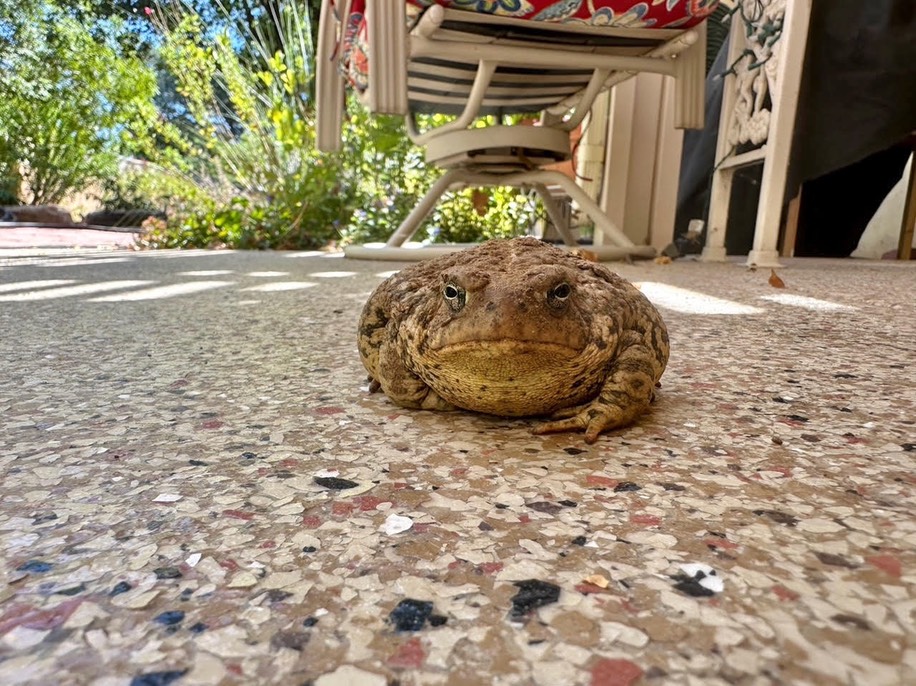
Some time ago Tom Lander, Kingston, sent me the image above, of a Woodhouse's Toad, Anaxyrus woodhousii. A nice image, other than adding it to one of our species galleries I wondered how I might use it. About that time I was asked to review Google’s Gemini image generator. I was playing so I asked Gemini to take this image and (giving it a set of parameters) generate something. The image below is what I got back.
A Woodhouse’s Toad model for your home, complete with box and a computer showing the LiDAR imaging software which was used to generate the model. Complete with coffee cups and assorted cables. None of this ever existed. None of this is real.
We do not use AI generated material in any of our publications or on our websites - except in the April 1 press release we include in the Black Range Naturalist.
